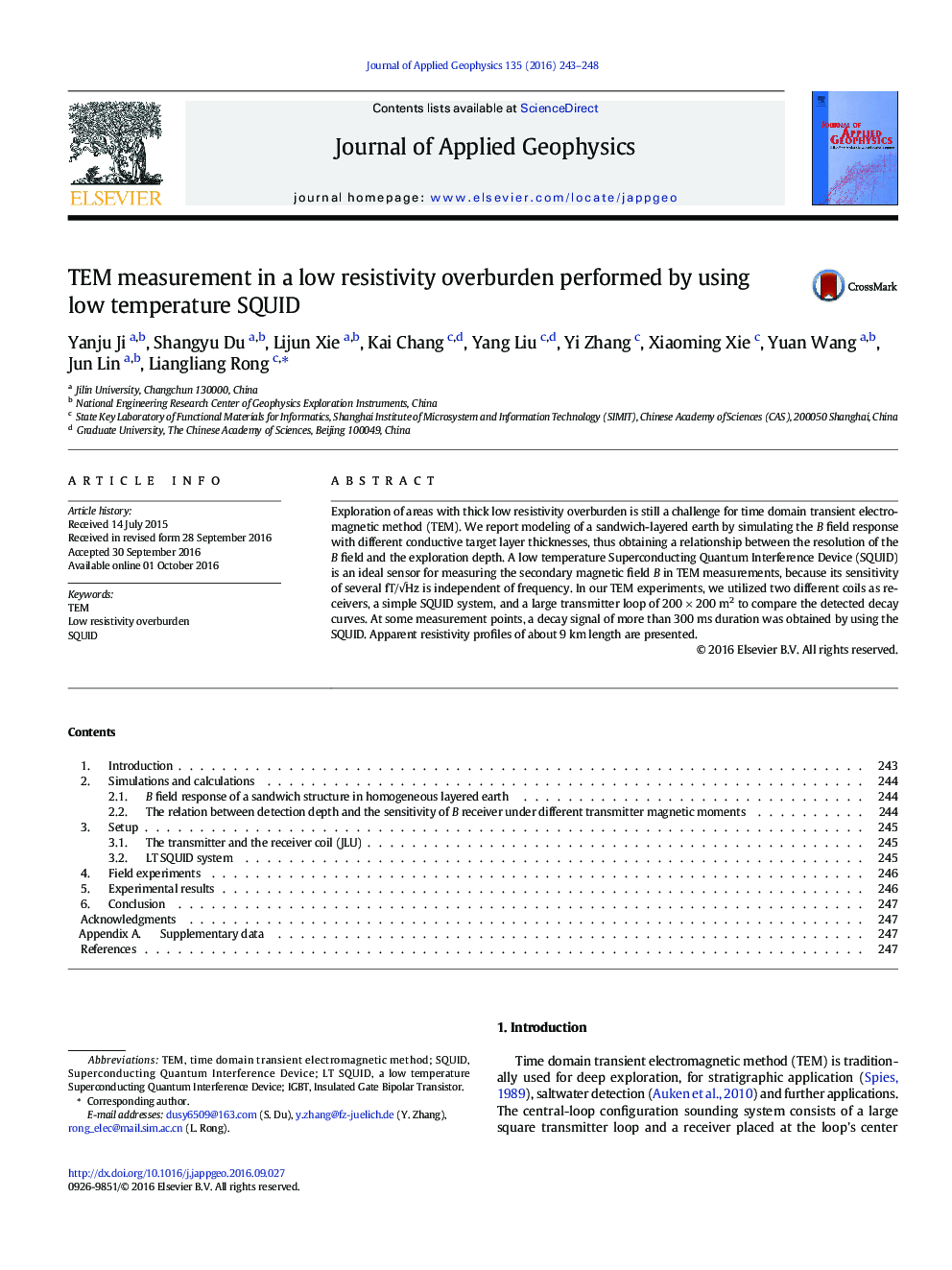| Article ID | Journal | Published Year | Pages | File Type |
|---|---|---|---|---|
| 4739707 | Journal of Applied Geophysics | 2016 | 6 Pages |
•A sandwich-layered earth is modeled to obtain a relationship between the resolution of the B field and the exploration depth.•A transmitter and receiver system in TEM was designed for the exploration of areas with thick low resistivity overburden.•TEM measurement used by SQUID can detect both shallow and deep regions.
Exploration of areas with thick low resistivity overburden is still a challenge for time domain transient electromagnetic method (TEM). We report modeling of a sandwich-layered earth by simulating the B field response with different conductive target layer thicknesses, thus obtaining a relationship between the resolution of the B field and the exploration depth. A low temperature Superconducting Quantum Interference Device (SQUID) is an ideal sensor for measuring the secondary magnetic field B in TEM measurements, because its sensitivity of several fT/√Hz is independent of frequency. In our TEM experiments, we utilized two different coils as receivers, a simple SQUID system, and a large transmitter loop of 200 × 200 m2 to compare the detected decay curves. At some measurement points, a decay signal of more than 300 ms duration was obtained by using the SQUID. Apparent resistivity profiles of about 9 km length are presented.
